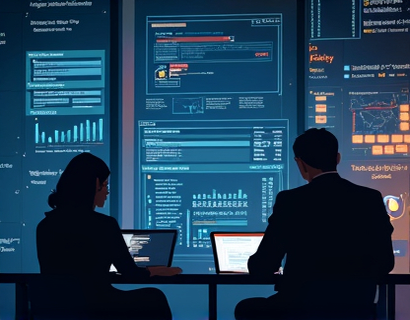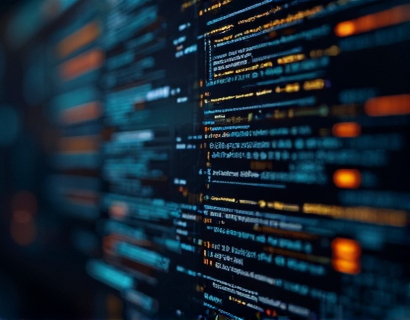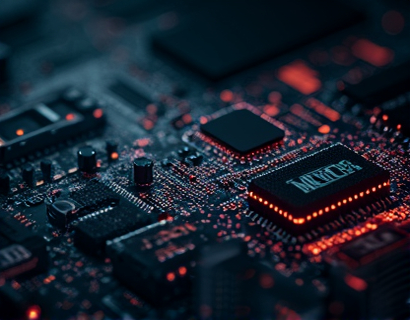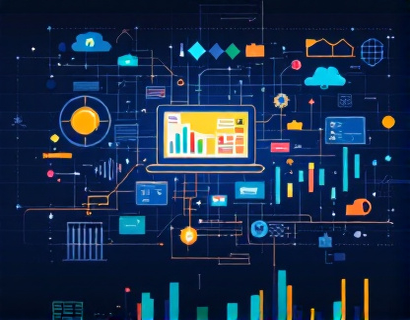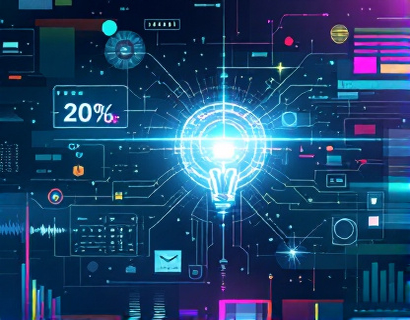Layer 2 Innovations: Revolutionizing Blockchain Scalability for Developers
In the rapidly evolving landscape of blockchain technology, scalability has emerged as a critical challenge that developers and innovators must address to unlock the full potential of decentralized applications. While blockchain's inherent strengths in security and transparency are undeniable, its native scalability limitations have prompted a surge in Layer 2 (L2) innovation. This article delves into the cutting-edge L2 solutions tailored for EVM-enabled software, exploring how these advancements enhance efficiency and security for developers, and drive innovation in the blockchain space.
Understanding Layer 2 Solutions
Layer 2 solutions refer to technologies built on top of existing blockchain networks (Layer 1) to improve transaction throughput, reduce costs, and enhance overall performance. Unlike Layer 1 upgrades, which involve modifying the core protocol, L2 solutions operate within the existing framework, leveraging it to achieve greater scalability without compromising security. For developers working with EVM-enabled platforms like Ethereum, L2 solutions offer a powerful toolkit to build more efficient and scalable decentralized applications (dApps).
Key Layer 2 Innovations
Several key L2 innovations have emerged, each addressing specific aspects of scalability and performance. These include state channels, sidechains, and rollups, among others. Each technology brings unique benefits and use cases, making them suitable for different types of applications and developer needs.
State Channels
State channels allow for off-chain transactions, where multiple transactions can be executed between parties without being immediately recorded on the main blockchain. Once the channel is closed, the final state is submitted to the blockchain, significantly reducing the load on the network. This approach is particularly beneficial for applications requiring frequent, low-value transactions, such as gaming or micropayments. State channels minimize gas costs and increase transaction speeds, making them an attractive option for developers seeking to enhance user experience.
Sidechains
Sidechains are independent blockchains that are linked to the main chain, enabling assets to be transferred between them. This mechanism allows for greater flexibility and scalability, as sidechains can be optimized for specific use cases. For instance, a sidechain can be designed to handle high-throughput transactions at lower costs, while still maintaining a strong security model. Developers can leverage sidechains to offload certain operations from the main chain, improving overall system performance and reducing congestion.
Rollups
Rollups are one of the most promising L2 solutions, offering significant improvements in scalability and cost-efficiency. There are two main types of rollups: Optimistic Rollups and ZK Rollups. Optimistic Rollups bundle multiple transactions into a single transaction on the main chain, with a challenge period to verify the validity of off-chain transactions. If no challenges are raised, the transaction is confirmed. ZK Rollups, on the other hand, use zero-knowledge proofs to bundle and verify transactions off-chain, providing faster confirmation times and higher throughput. Both types of rollups drastically reduce gas fees and increase transaction speeds, making them ideal for a wide range of applications.
Enhancing Efficiency and Security
The primary goal of L2 solutions is to enhance the efficiency and security of blockchain networks. By offloading certain operations to the secondary layer, the main chain can focus on critical tasks, reducing congestion and lowering transaction costs. This separation of concerns not only improves performance but also maintains the robust security features of the underlying blockchain.
For developers, this means building dApps that are not only faster and cheaper but also more reliable. The reduced latency and increased throughput provided by L2 solutions enable smoother user experiences, which is crucial for the adoption and success of decentralized applications. Moreover, the security of L2 solutions is deeply rooted in the primary blockchain, ensuring that developers can trust the integrity of their applications.
Developer-Friendly Ecosystem
The rise of L2 solutions has also led to the development of more developer-friendly ecosystems. Tools, libraries, and frameworks are being created to simplify the integration of L2 technologies into existing projects. For instance, libraries like Optimism and Arbitrum provide easy-to-use interfaces for developers to implement Optimistic Rollups in their dApps. Similarly, platforms like Polygon and Binance Smart Chain offer comprehensive solutions for deploying and managing ZK Rollups.
These developer tools reduce the complexity and technical barriers associated with L2 integration, allowing developers to focus on building innovative features and user experiences. The growing community and ecosystem around L2 solutions ensure that developers have access to a wealth of resources, including documentation, tutorials, and support forums.
Case Studies and Real-World Applications
To illustrate the practical benefits of L2 innovations, consider a few real-world applications. A gaming platform built on an Optimistic Rollup can offer near-instant transaction confirmations and significantly lower fees, enhancing the player experience and attracting a broader user base. In the finance sector, decentralized lending protocols leveraging ZK Rollups can process a higher volume of transactions with minimal delays, improving liquidity and user satisfaction.
Another example is the use of sidechains for NFT marketplaces. By offloading the heavy lifting of NFT transactions to a sidechain, the main chain can remain focused on critical operations, resulting in faster transaction times and lower costs for both buyers and sellers. This approach not only improves the scalability of the platform but also makes it more accessible to a wider audience.
Future Prospects and Challenges
As L2 solutions continue to evolve, the blockchain landscape is poised for significant advancements. The integration of L2 technologies with emerging trends like interoperability and cross-chain communication will further enhance the capabilities of decentralized applications. However, challenges remain, such as ensuring seamless user experiences, maintaining security across multiple layers, and fostering widespread adoption among developers and users.
Developers play a crucial role in overcoming these challenges by experimenting with different L2 solutions, sharing insights, and contributing to the development of best practices. The collaborative nature of the blockchain community ensures that solutions are continuously refined and improved, paving the way for a more scalable and efficient decentralized future.
Conclusion
Layer 2 innovations represent a transformative force in the blockchain ecosystem, addressing the critical issue of scalability while maintaining the core strengths of decentralized networks. For developers building EVM-enabled dApps, L2 solutions offer a powerful set of tools to enhance efficiency, reduce costs, and improve user experiences. As the technology matures and the ecosystem grows, the potential for innovation and growth in the blockchain space is immense. Embracing L2 solutions is not just a strategic advantage but a necessity for developers aiming to build the next generation of decentralized applications.







